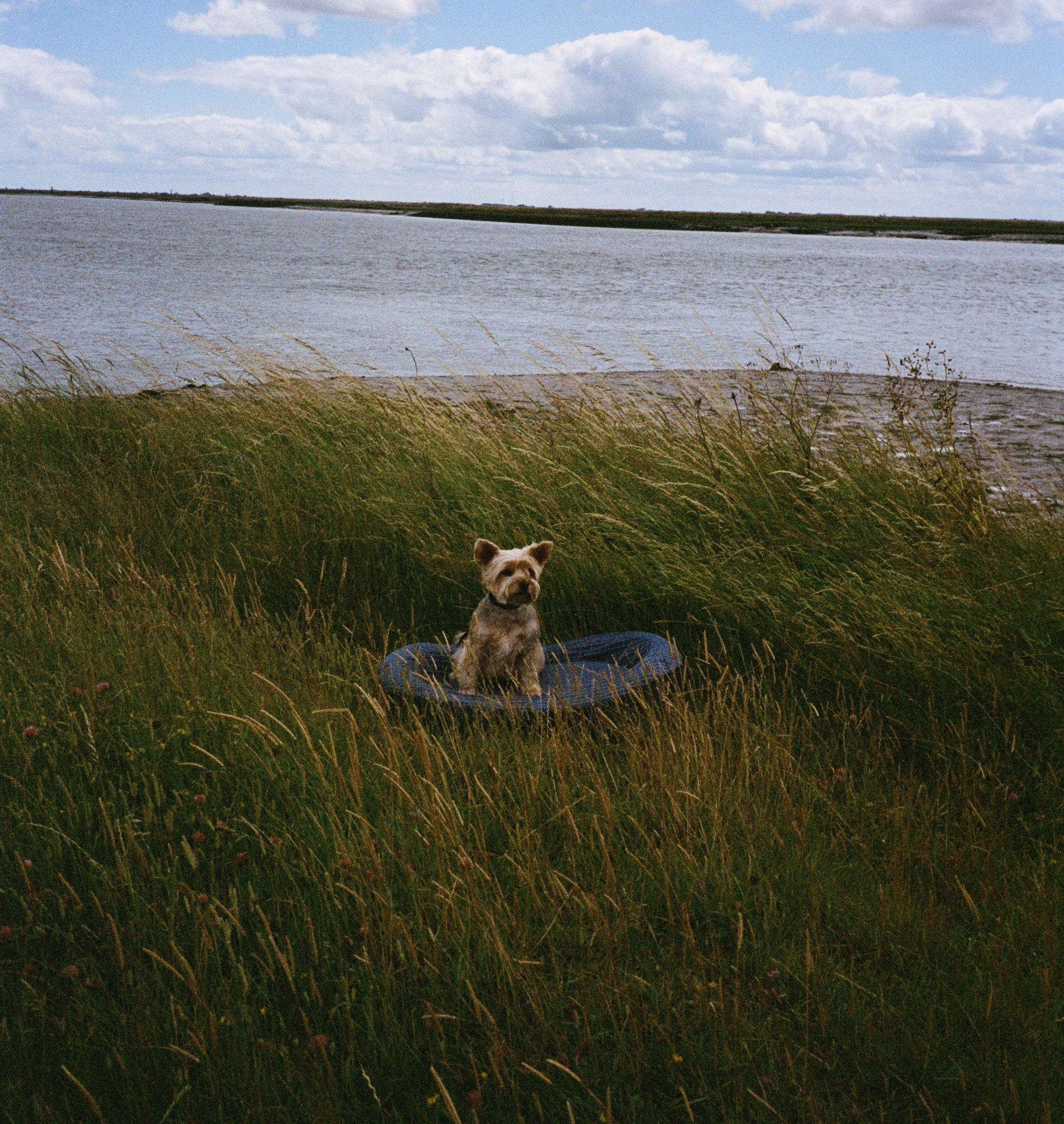
Terriers of Scotland
Haggis, ceilidhs, windswept moors, and the feisty little “earth dogs” that we call terriers - Scotland has given the world many treasures, but few come with as much pluck and personality as its canine exports. While the haggis remains an acquired taste and ceilidh dancing is perhaps, best left to those with nimble feet, Scottish terriers have trotted far beyond the Highlands and coasts, digging their way into homes (and hearts) across the globe. Stubborn, spirited, and endlessly charming, these small but mighty dogs are a testament to Scotland’s knack for producing things that are both timeless and full of character.
Scotland and the UK feature a smattering of terrier dogs throughout their history. The variety of terriers originating from the UK are vast, and images to support the historical accounts of terriers often present a variety of physical appearances, as each terrier breed developed per the needs of the regions and people who raised them.
Generally, Scotland’s terriers were bred and used to hunt rabbits, foxes, rats and even otters. Today, these breeds are beloved by many and exist beyond the borders of Scotland. Some are less common than others, but overall, most are known for their intelligence, happiness, energy and well-rounded temperaments.
To demonstrate, we highlight a few of these cuties:
Dandie Dinmont Terrier
This small, long-bodied dog has been characterized as independent, proud and smart. Visually, Dandie Dinmont Terriers, or “Dandies”, rock a topknot of perfectly floofed hair atop its head. With their slightly curved back, big eyes, nose and mouth, the Dandie maintains a very cute demeanor from its puppy years through adulthood. The breed dates back to the 1700s and originated as farm dogs hunting rodents along the border of England and Scotland. They were popularized in part thanks to the 1815 novel Guy Mannering, and were named after a character in the book that owned several of these dogs. They were recognized by the American Kennel Club (AKC) in 1886.
Today, Dandies make for a relatively low-maintenance breed to have, as they benefit from generally good health and an easygoing temperament. However, based on my own search online, the breed is relatively sparse in the United States.
Border Terrier
One of the oldest terrier breeds also with origins in the Scottish and English borders, Border Terriers were first kept in the hilly countryside by farmers and shepherds to help combat hill foxes. Affectionate, happy and plucky, these small, long-legged dogs are strong and tireless, despite their size. Their otter shaped heads and darker colored muzzles make them easily recognizable, while their wiry coat allows them to withstand rain and mist commonly found in the borders where they were first bred. The AKC recognized this breed in 1930.
Today, the Border Terrier is a popular pet in both city and countryside homes. So long as they get exercise, the breed can adapt well to city life. Further, these dogs typically get along well with other dogs. But, due to their high prey drive and instinct to chase, it is worth exposing Borders to any other small household pets from a young age. As high energy and swift little beings, Borders make great household pets that will keep you on your toes!
West Highland Terrier
 The lovable, plush toy-esque West Highland Terrier or “Westie” for short needs practically no introduction. Loyal, happy, entertaining and (we really must say again) cute, this compact and sturdy dog is strong and tough. Originally bred to hunt rats and rodents, the Westie finds its origins in the 1700s when the Malcolm clan in Scotland was credited to have begun breeding these dogs. They were first recognized by the AKC in 1908 as the Roseneath Terrier, but later in 1909, were registered as the West Highland White Terrier. Despite their fluffy looking appearance, their double white coat covers their armor-like, hard textured skin.
The lovable, plush toy-esque West Highland Terrier or “Westie” for short needs practically no introduction. Loyal, happy, entertaining and (we really must say again) cute, this compact and sturdy dog is strong and tough. Originally bred to hunt rats and rodents, the Westie finds its origins in the 1700s when the Malcolm clan in Scotland was credited to have begun breeding these dogs. They were first recognized by the AKC in 1908 as the Roseneath Terrier, but later in 1909, were registered as the West Highland White Terrier. Despite their fluffy looking appearance, their double white coat covers their armor-like, hard textured skin.
As household members, Westies can make good watchdogs and befriend humans and dogs alike. With proper training, mental stimulation and socialization, these dogs may channel their high energy levels properly.
Scottish Terrier
 Last but not least for this mini feature: the alert, feisty and self-assured Scottish Terrier, or “Scottie”. Plastered across media, fashion, history and pop culture for years, the famous Scottie finds its place in an array of cultural moments. From being featured as a playing piece in the board game Monopoly, to being the only dog breed to have lived in the White House three times, these dogs are practically a name brand. The breed has been around since the late 1800s, but wasn’t recognized by the AKC until 1993.
Last but not least for this mini feature: the alert, feisty and self-assured Scottish Terrier, or “Scottie”. Plastered across media, fashion, history and pop culture for years, the famous Scottie finds its place in an array of cultural moments. From being featured as a playing piece in the board game Monopoly, to being the only dog breed to have lived in the White House three times, these dogs are practically a name brand. The breed has been around since the late 1800s, but wasn’t recognized by the AKC until 1993.
In the home, Scotties make great watchdogs, as their ancestors were used to hunt badgers and foxes. Self-assured and independent, the Scottie will alert you to any stranger danger or prey with a loud bark. Like many other terriers, the Scottie requires socialization from a young age to help them settle in well with the family.
Whether you’re already a fan of one of these breeds or looking to introduce one of these courageous diggers into your family, the terrier breeds of Scotland make great candidates for family pets in city and country environments. Their high levels of intelligence make for engaging companions, and their exercise requirements prove manageable. It’s no wonder that these dogs have lasted throughout the years, and continue to be beloved and adorable members of families everywhere.




Leave a comment
This site is protected by hCaptcha and the hCaptcha Privacy Policy and Terms of Service apply.